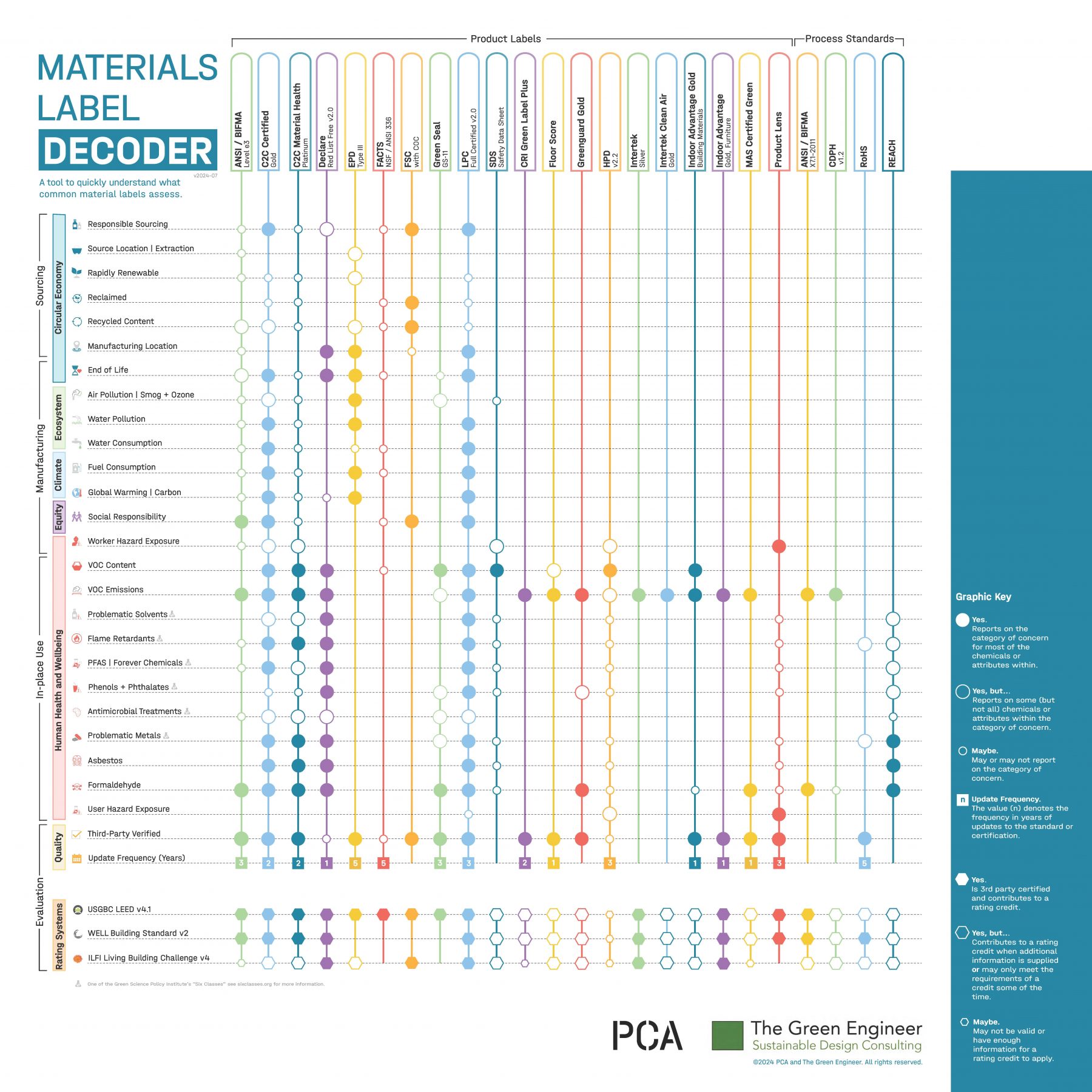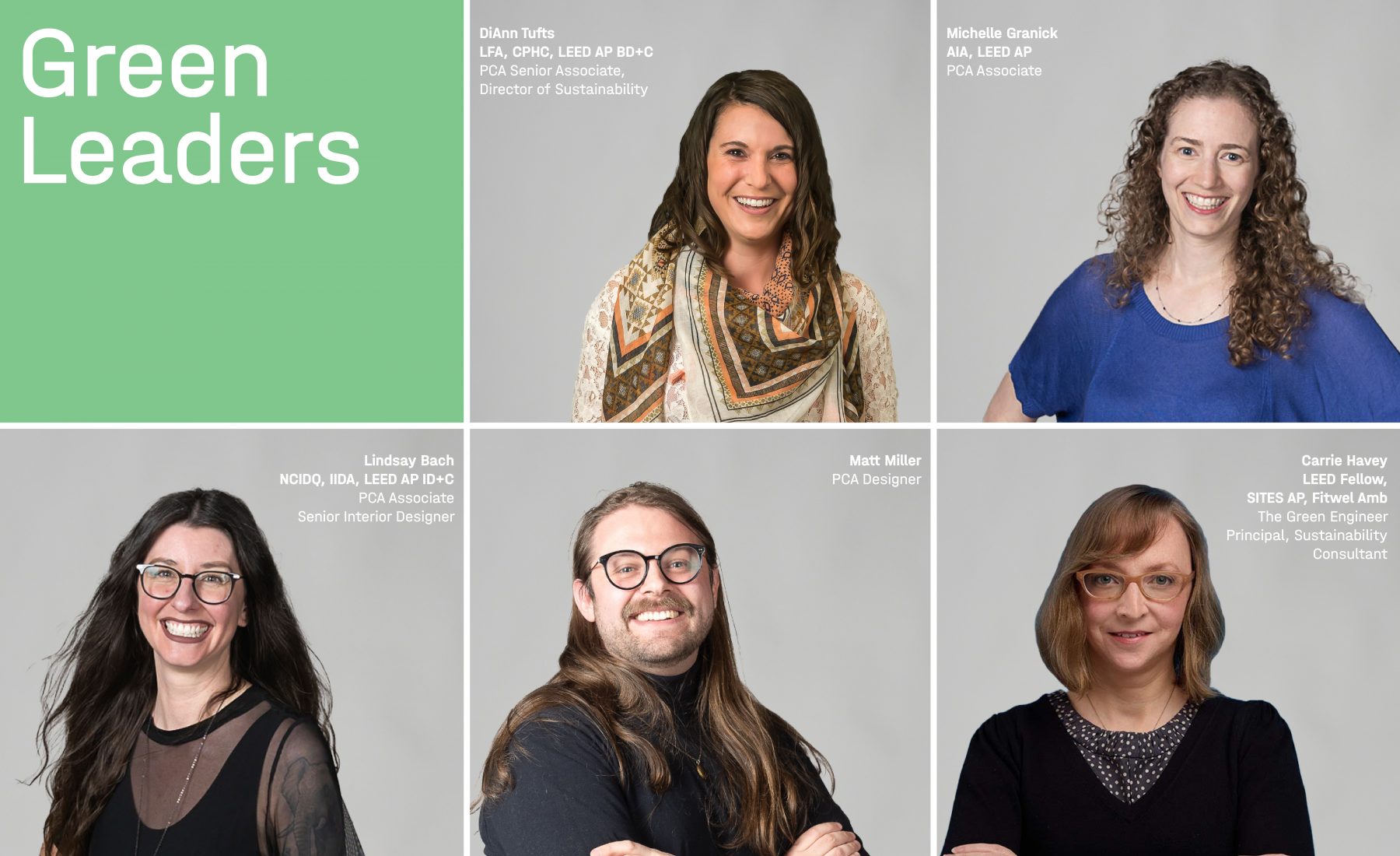Materials are the crux of the problem. They are also the key to the solution.
Martha Lewis, Senior Architect, Head of Materials at Henning Larsen Architects, Denmark
Butterbird located in Watertown, MA; was sustainably sourced with HempWood Panels where the Decoder identified that no PVCs, phthalates or fire retardants were used. In addition, EPDs were referenced to research this product’s LCA – see the ecosystem and circular economy section of the Decoder and Legend below for further explanation.
At PCA one of our most critical and professional affinity groups is the Healthy Materials Team, part of the Sustainability Group. Over the past three years this team, consisting of DiAnn Tufts, Director of Sustainability, LFA, CPHC, LEED AP BD+C; Michelle Granick AIA LEED AP, Architect; Lindsay Bach NCIDQ, IIDA, LEED AP ID+C, Interior Designer; Matt Miller, Designer, and our valued partner, Carrie Havey LEED Fellow, SITES AP, Fitwel Amb, Principal with The Green Engineer, have developed a comprehensive tool to help with selecting and specifying sustainable and healthy materials on design projects – The Materials Label Decoder.
What is The Materials Label Decoder?
The Decoder provides an effective way to accomplish sustainability goals by helping you, as a design professional, contractor or owner to carefully select the “right” materials and products. Every day, project teams work to specify materials that perform optimally for human health, energy, carbon, and environmental impact. In addition, several AEC industry-wide research groups have devised guidelines and regulations to further advance the policy of specifying sustainable products and materials i.e., the AIA Materials Pledge, The Six Classes, and the Common Materials Framework, as part of the design process. However, how do you determine which attributes and labels to prioritize when selecting products and materials for your projects? It is important that design professionals know what each materials label can tell them, how multiple products and materials relate to each other, and how they can be implemented collectively to meet sustainable materials goals on projects.

